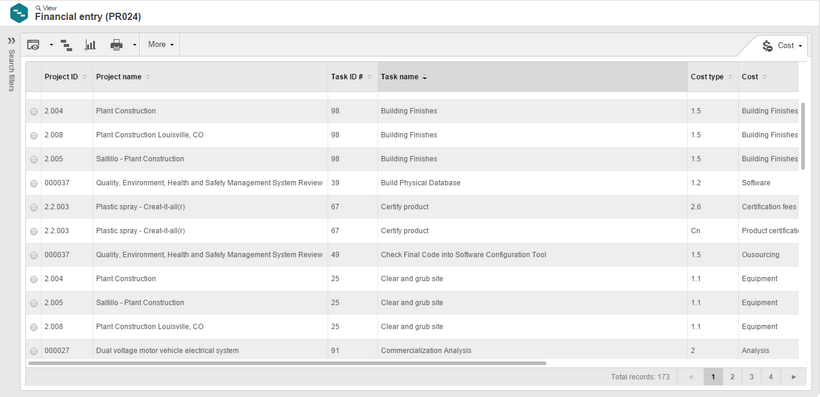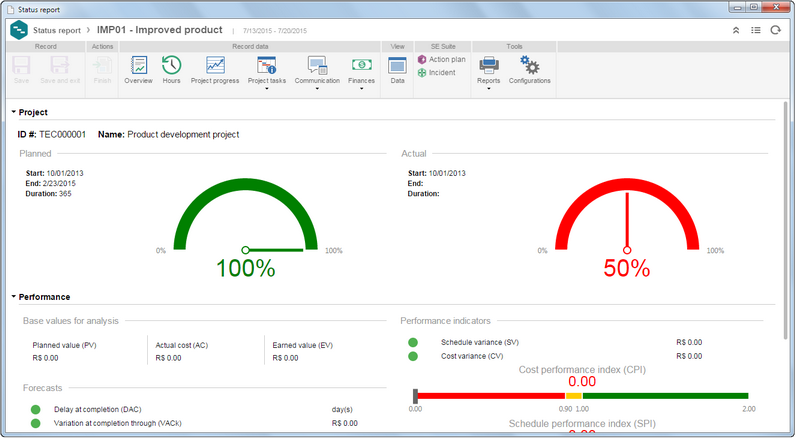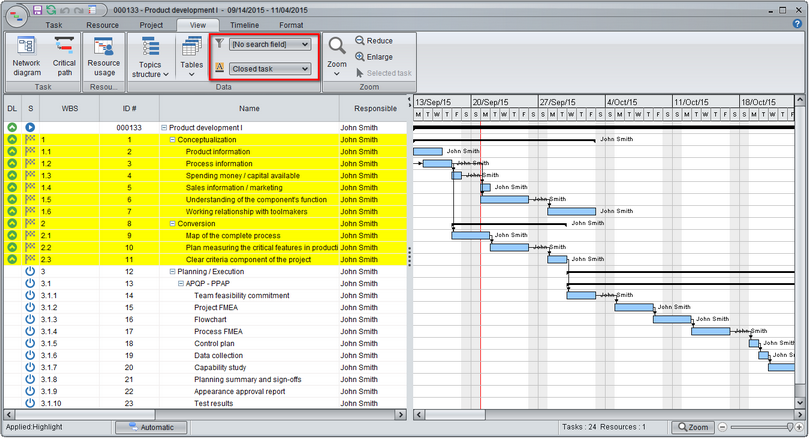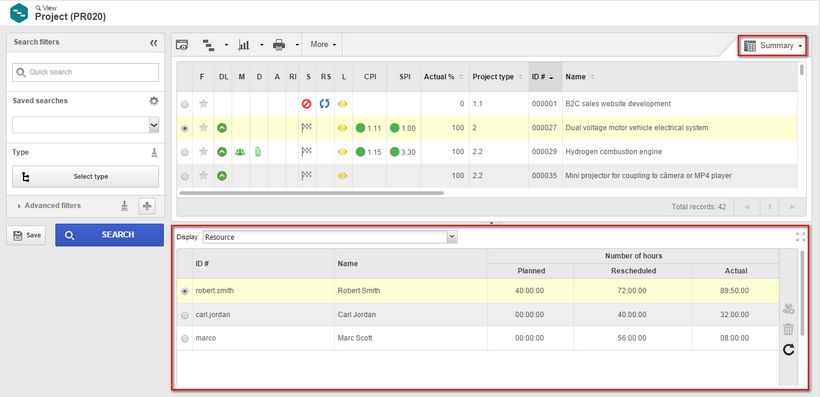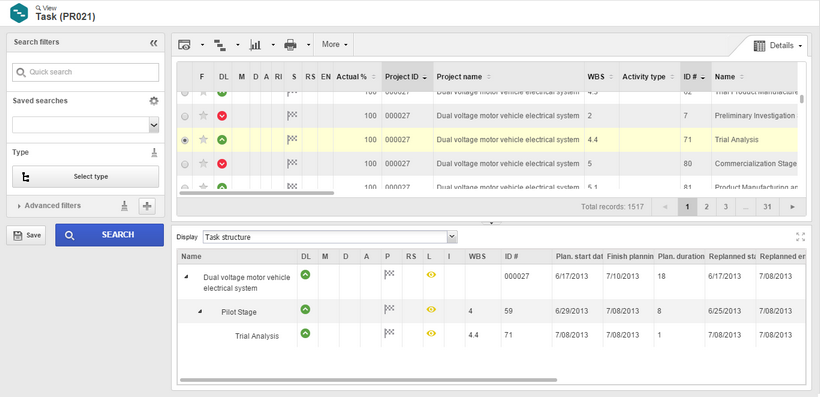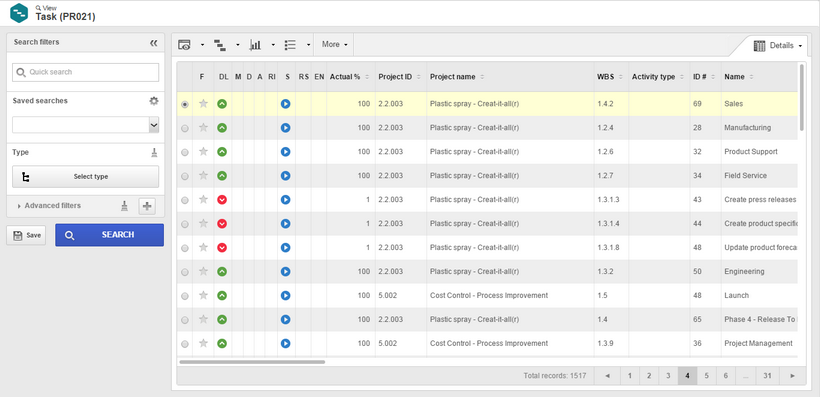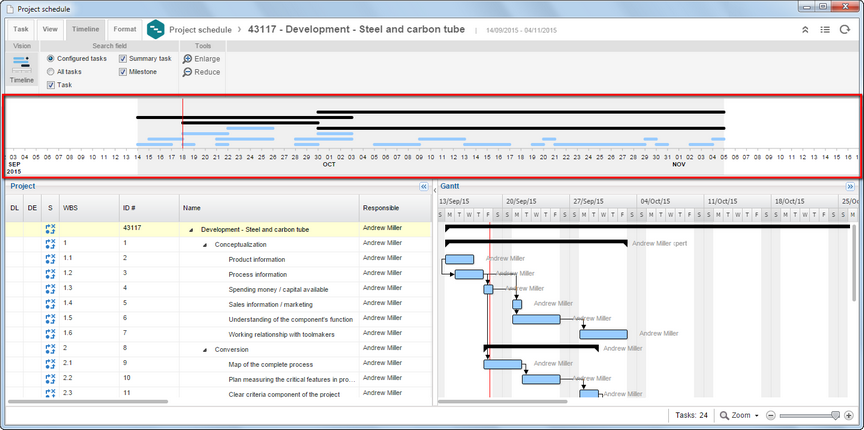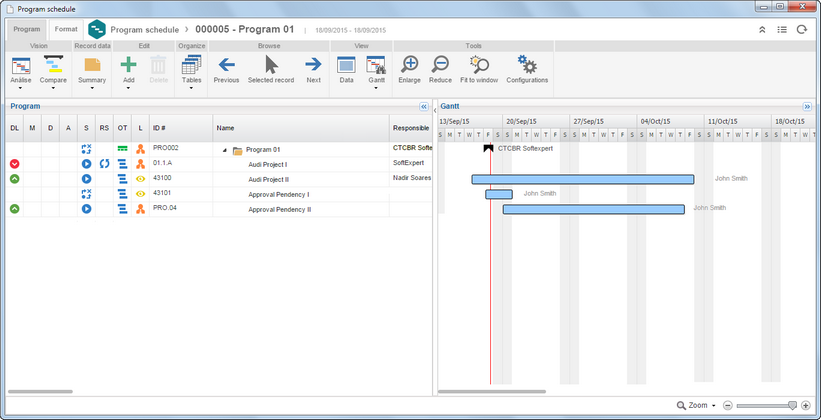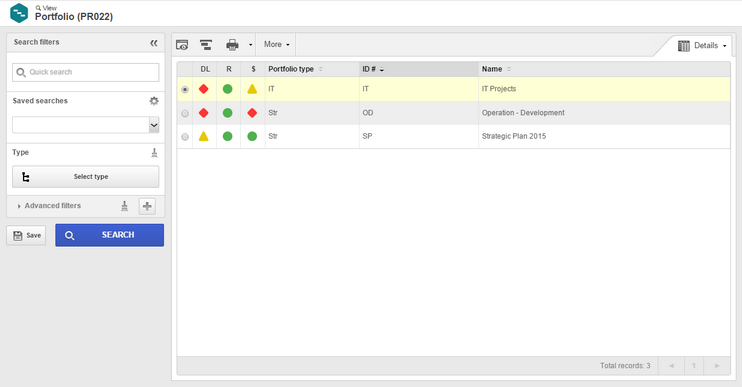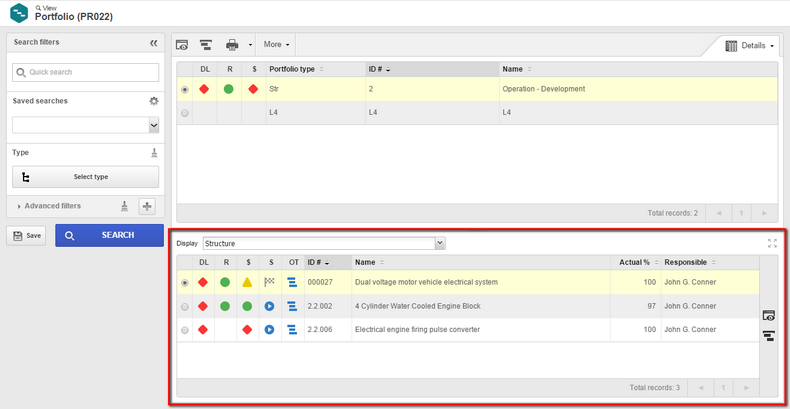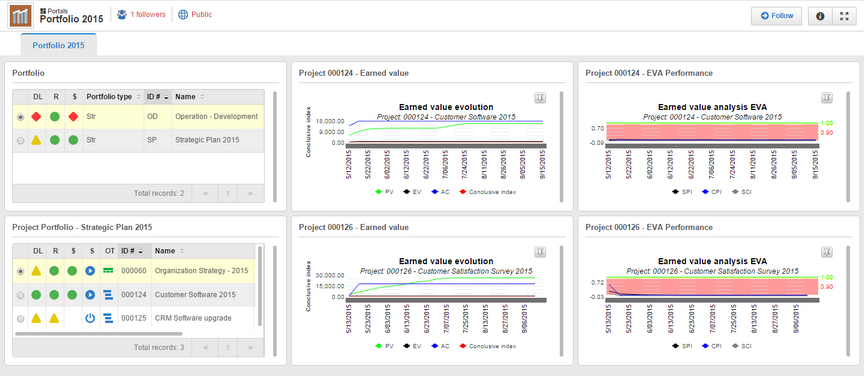
Association of document attributes with the project
When user registers a document, he can associate attributes if that has been configured. During the association of a document with a project or isolated activity, the system will copy the values of the associated document attributes that are the same attributes the object has. When one or more documents are associated simultaneously with the project / activities, if the same attributes are in the documents to be copied to the object, the priority will be for the last one in the copy queue. The attributes which are not common between them, will have to be entered separately.
Association of process attributes with project
When user registers a process, he can associate attributes if that has been configured. During the association of a process with a project or isolated activity, the system will copy the values of the associated process attributes that are the same attributes the object has. When one or more processes are associated simultaneously with the project / activity, if the same attributes are in the processes to be copied to the object, the priority will be for the last one in the copy queue. The attributes which are not common between them, will have to be entered separately.
Views that display cost and revenues have been improved
When user views financial information, he will be able to see cost and revenue separately through view implementation. Thus, project cost, revenue and gross margin will be displayed separately.
View values searching by portfolio during view of Budget data
To view budget data allows user to parameterize the period and consider the project, program and portfolio. Thus, user will be able to manage financial data more accurately, allowing even to group information by week or month, according to search criteria that have been defined. Through view it is possible to search information through planned, rescheduled, actual and comparative filters, where all information is considered.
Implementation of project STATUS REPORT with information such as past due activities, costs, etc.
During the creation of the status report template user can perform parameterizations adequate the template according to his needs. When user registers the project type, he can link the status report template he wishes to use. When a project is registered, the report template will be linked automatically starting from the project type, where it can be modified.
Starting from this link, the report can be generated according to the desired frequency and the result will be stored for future views.
Project progress chart - Formula to calculate actual progress has been changed
The calculation to display actual progress has been changed, to consider execution dates entered in the system.
Gantt view profile
Gantt chart view now has a view profile by user, that is, each user will be able to use view profile that best suits his needs.
From the toolbar of Gantt chart in "View" tab screen, the system will allow to select a preconfigured search field to view information
In a project, user can view the Task schedule. He can view search desired activities and use "View" tab screen to parameterize for example the milestones, summary tasks, closed tasks, among others. Besides searching tasks, user can use parameterization to highlight tasks.
Adaptations and improvement in Project view
Vision concept has been implemented and allows user to define the project information he wishes to visualize. There is a possibility to display cost, revenue, time and other data separately to facilitate analyses. The user can also parameterize the use of the third quadrant where the details related to the project will be displayed, such as: cost, revenue, time registered, where the project is used, composed of, among others.
Adaptations and improvement in Project reports
To issue a project report, new detail parameters have been added, such as: where and how it is used, composed of. Where used displays information regarding where the project is linked and this can be another project, program and portfolio. Composed of displays associated projects, also called subprojects.
Adaptations and improvement in Activity views
Due to the volume of task information, such information has been grouped through the vision to be viewed. Another available resource is the use of the third quadrant where user can see details related to the activity, such as: cost, revenues, time registered, among others.
Visualization implemented for the task status, whether they are past due tasks or not, based on the entered and calculated percentage
When user views tasks he is able to identify the status of each task, considering the deadline (on time, past due, outdated), the status (Planning, postponed, closed, etc.) and Actual %. Thus, user will be able to distinguish tasks based on their deadline and their status.
It will be possible to perform "Task verification" in GanttProject tool
During the access to the task project schedule, user can register timesheet, enter executed percentage and task verification registration, if that has been parameterized. According to permissions granted, user will be able to perform several centralized operations and will not need to exit screen.
Implementation of third quadrant
This implementation will display details on the lower part of the objects that have been displayed on the upper part. This new quadrant will also present options to supply details of displayed data.
Addition of a project from a file
The creation of a new project allows import using MPP/MPX format. Import in MPP format is only possible for: MS-Project 2000, MS-Project 2003, MS-Project 2007 and MS-Project 2010. MPX format can be in the following languages: German, Chinese, Spanish, French, English (Australia), English (USA), Italian, Portuguese (Brazil) and Portuguese (Portugal). Such addition can only be for those projects that are in planning status and that do not have any tasks; import will be performed individually. The tasks that do not have values in name, start and end fields will not be imported, nor their lower level tasks.
Export of project in XML format
When a project is selected, user can export to MPX and XML formats. Such export occurs individually. Files are exported in the following languages: German, Chinese, Spanish, French, English (Australia), English (USA), Italian, Portuguese (Brazil) and Portuguese (Portugal).
New Project schedule – WEB – Timeline
Implementation of tasks "Timeline" for a quick project visualization, highlighting main tasks of the project and enabling printing.
New Project schedule – WEB
Implementation of new visualization for project schedule, where user can parameterize and adjust Gantt according to the screen dimensions.
Program management
The goal of Program management is to group projects and other programs that have shared resources and are interdependent, allowing a coordinated management to obtain benefits and control that would not be available if they were managed individually. Program management does not level resources.
A subprogram and a project cannot be associated with more than a program. A subproject cannot be added to any program and has to be associated with the program, via macroproject. The project associated with a program cannot be cancelled or postponed.
A program can have a budget for cost and revenue and the actual values can be registered directly in the program. There is no possibility to use timesheet directly for a program. Estimated and actual hours will be linked to the program projects.
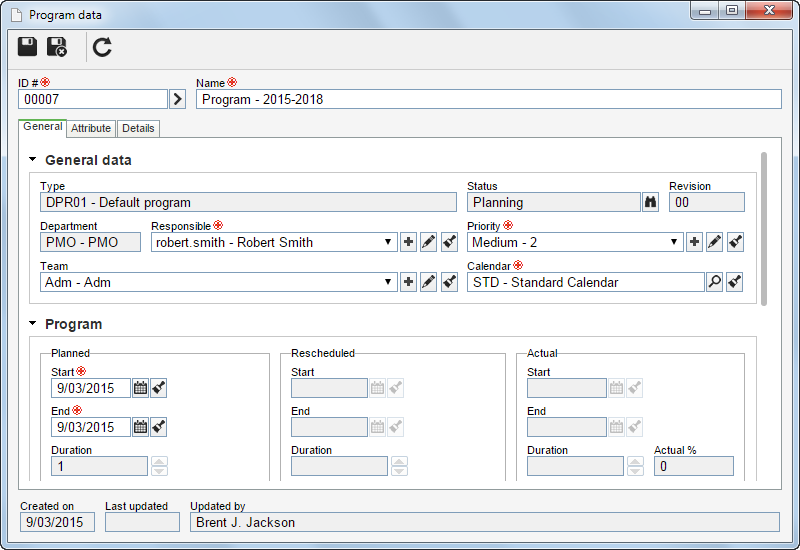
Improvement of portfolio view – grouping by portfolio with list of projects and total values
Starting from view resource, user can visualize portfolio information separately, such as: deadline, resource and result, which facilitates analyses. User can also perform parameterizations to be able to use the third quadrant, where the details related to the portfolio can be displayed, as structure (portfolio projects) and total.
Dynamic view of project portfolios
When user views project portfolio, he can parameterize the use of the third quadrant, where the selected portfolio projects will be displayed.
Widgets of "Earned value", "EVA Performance" and "Portfolio"
The implementation of new widgets enables user to view the performance, earned value, the way to evaluate projects progress.
